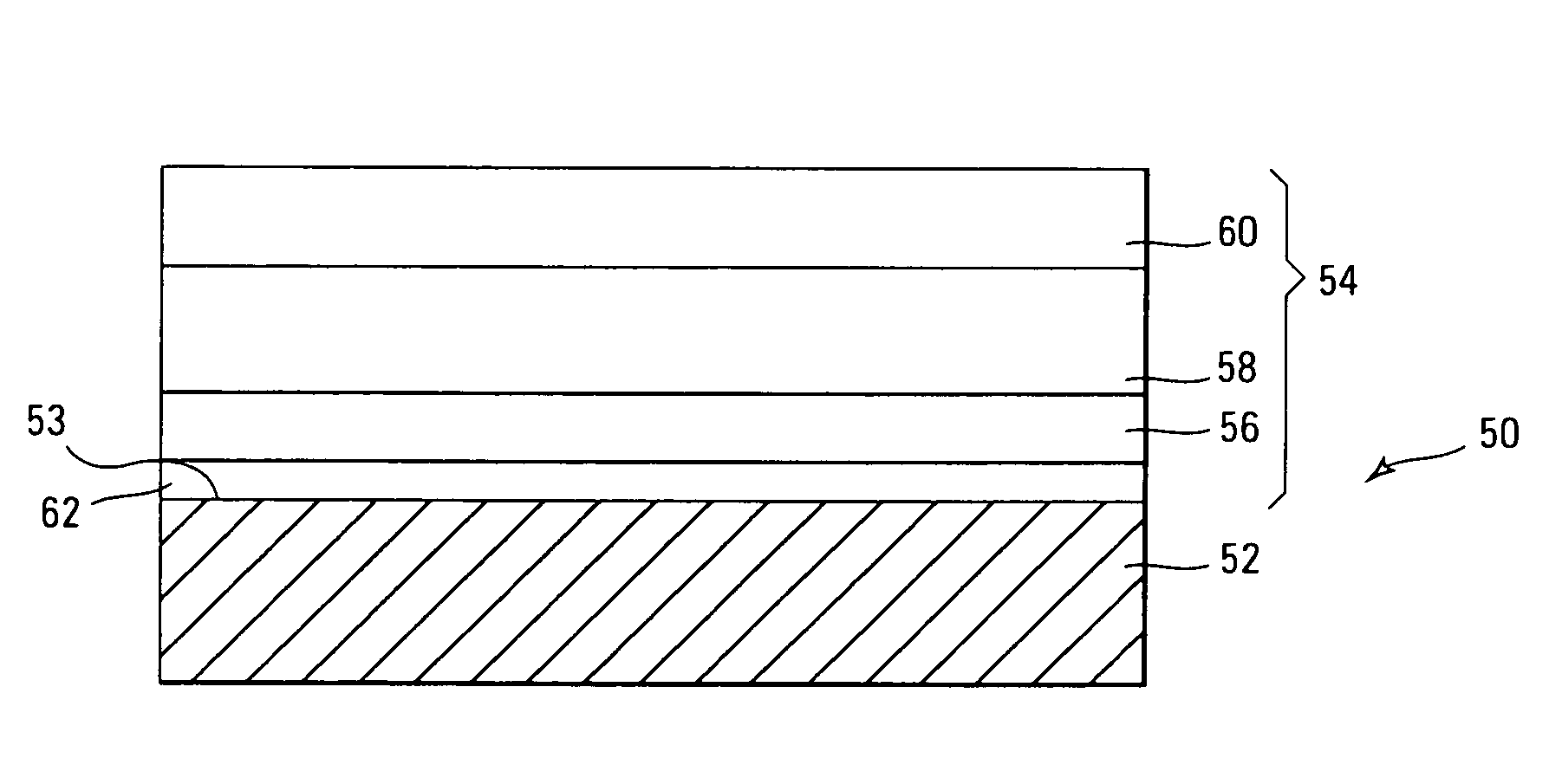Systems and methods for forming refractory metal nitride layers using organic amines
a technology of organic amines and refractory metals, applied in the direction of coatings, chemical vapor deposition coatings, capacitors, etc., can solve the problems of frequent formation of undesirable interfacial layers of siosub>2 /sub>, high leakage paths and channels, and dielectric layers approaching only 10 in thickness, so as to minimize the effect of detrimental gas phase reaction and improved layer thickness control
- Summary
- Abstract
- Description
- Claims
- Application Information
AI Technical Summary
Benefits of technology
Problems solved by technology
Method used
Image
Examples
example 1
Pulsed CVD of TaN Using TaF5 and HN(SiHMe2)2.
[0069]A chamber of configuration shown in FIG. 3 was set up with pneumatic valves under computer control to pulse the valves open in sequential manner. Two reservoirs connected to the chamber contained TaF5 (Alfa Aesar, Ward Hill, Mass.) and tetramethyldisilazane (TMDS) (Sigma-Aldrich Chemical C., Milwaukee, Wis.). The TaF5 reservoir was held at 75° C. and the TMDS at ambient. The substrate was a silicon wafer having borophosphosilicate glass (BPSG) as a top layer and was maintained at 255° C. for the deposition.
[0070]Each cycle involved a 2-second pulse of TaF5 and a 1-second pulse of TMDS, each separated by a 1-second purge with argon and a 2-second pump down under dynamic vacuum. The precursors were introduced without carrier gases, using only a mass flow controller for the TMDS vapor, set at 100 sccm. After 300 cycles a TaN film 110 nm thick was obtained, having a resistivity of 7150 μΩ-cm as measured using a four-point probe. The fil...
PUM
| Property | Measurement | Unit |
|---|---|---|
| adsorption energies | aaaaa | aaaaa |
| deposition temperatures | aaaaa | aaaaa |
| temperature | aaaaa | aaaaa |
Abstract
Description
Claims
Application Information
 Login to View More
Login to View More - R&D
- Intellectual Property
- Life Sciences
- Materials
- Tech Scout
- Unparalleled Data Quality
- Higher Quality Content
- 60% Fewer Hallucinations
Browse by: Latest US Patents, China's latest patents, Technical Efficacy Thesaurus, Application Domain, Technology Topic, Popular Technical Reports.
© 2025 PatSnap. All rights reserved.Legal|Privacy policy|Modern Slavery Act Transparency Statement|Sitemap|About US| Contact US: help@patsnap.com



